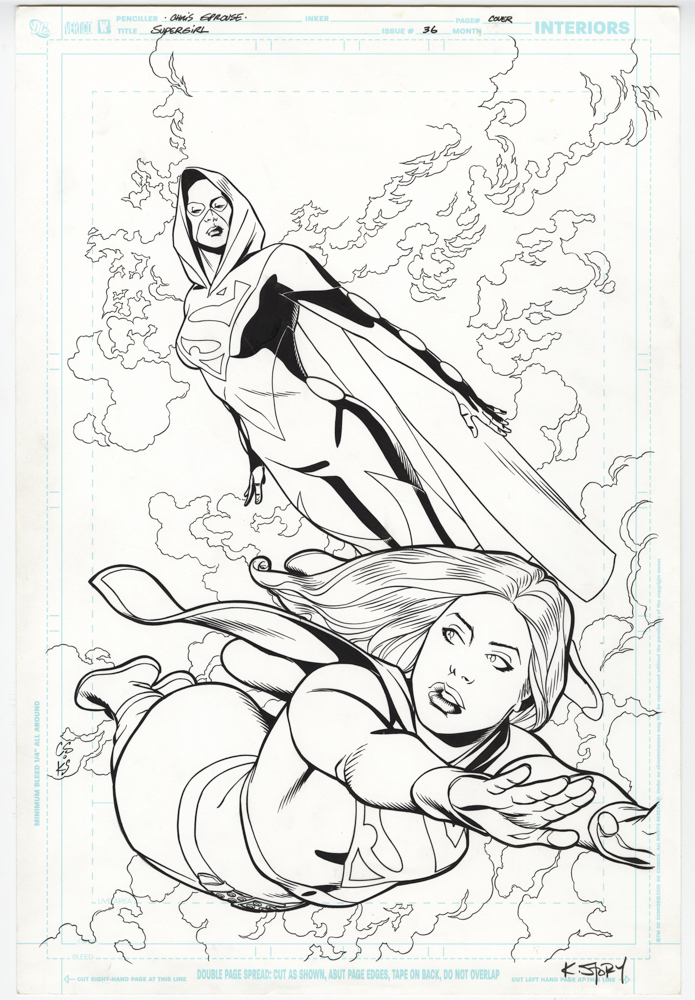Chris Sprouse / Karl Story — Double Feature
Supergirl #36, and Action #872, February 2009
Supergirl’s 5thseason premieres on the CW on Sunday, so our next few posts will take a look at the cousin of steel.
Here’s my unsolicited story idea for the terrific art team of Chris Sprouse and Karl Story: A Superman Family “Elseworlds” limited series that includes Superman, Supergirl, Lois and Jimmy, The Super Pets, The Legion of Superheroes, Kandor, Bizarro… And a full line-up of classic villains. Pretty much everyone who populated the mid 20th century Superman comics.
In other words, a longer form story that’s similar to Alan Moore’s and Curt Swan’s classic “Whatever Happened to The Man of Tomorrow,” but with —- spoiler alert — no fatal tragedies involved.
In 2020, that’s about as likely to happen as Perry White yelling “Great Caesar’s Ghost”, or Jimmy Olsen turning back into a giant turtle, but a guy can dream, can’t he?
Much like Steve Rude, Chris Samnee, and a handful of other artists, Chris and Karl take classic styling and adapt it into a modern form. It’s both retro and contemporary.
In many ways, it’s the best of both worlds. (Hey — that could be the name of the series.)
In the meantime, we have these two great covers: Supergirl and “Superwoman” (long story) gracefully flying, and Metallo and Reactron defeating the super cousins. Cyborgs rarely look this menacing on a super-hero cover.
And, if someone at DC miraculously likes my idea, and Mark Waid is tied up, it’s pretty easy to find me…





















































